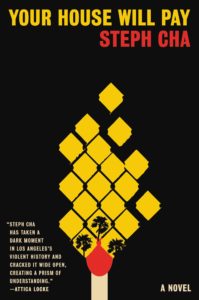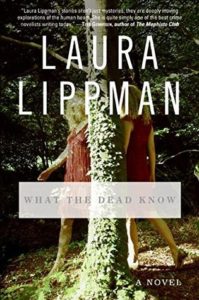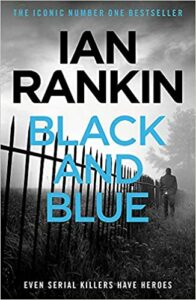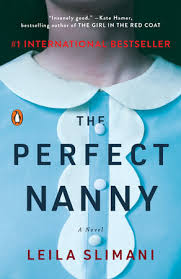When a novelist is inspired by a real-world crime, what can you expect from the resulting book? More than who committed the act, more than exactly how it happened, we long for something beyond the basic facts. Because a fiction writer also has to bring the reader into the experience, immerse them in the story, and give them a reason to keep reading.
I found inspiration for my thriller You Can Never Tell from the way in which Ian Brady and Myra Hindley were caught when they tried to involve Hindley’s brother-in-law, who spent hours assisting them before returning home, hiding with his wife and baby, then calling the police. I had so many questions—why the murderers felt safe recruiting him, how he and his wife could have missed the signs that they were living next to the Moors Murderers, how their relationship must have suffered afterwards under that strain of post-traumatic stress, guilt, and the psychological distance. These aren’t questions that can be answered with a list of facts.
That’s where the novel shines, insisting that we step inside a character and look at the world as someone else, making a crime story personal. Instead of pity and horror, we find ourselves sharing experiences, empathizing, in a way no other art form fully allows. The biggest questions in a novel based on a true crime case can’t be “whodunnit” and “how.” Through fiction those questions do service to bigger ones: What kind of world is this? What kind of people are we?
The following six novels are only a few favorites from the vast number inspired by real crimes:

Your House Will Pay by Steph Cha
In 1991 fifteen-year-old Latasha Harlins was shot by a Korean convenience store owner in South Los Angeles, mere weeks after Rodney King was beaten by police. Cha’s novel asks what might have happened if the family of the slain teen and the family of the woman who shot her crossed paths again in 2019. The novel bridges the two time periods, moving between the riots of 1991 and the movement for racial justice in 2019 and it’s a tension-filled, deeply intimate look at family relationships, secrets, revenge, grief, fear, and love.

The Monsters We Make by Kali White
Based on an unsolved case that helped launch the milk-carton campaign for missing kids, White recreates 1980’s Des Moines as one paperboy, then another go missing. Through a variety of different points of view, we experience the impact of the crime on the families, friends, neighbors, and investigators, as the town reels with terror and suspicion. White’s novel gives the gash torn in the community visceral power. In real life, this case has never been solved.

What the Dead Know by Laura Lippman.
While several other Lippman novels are based on real cases (including The Lady in the Lake), the one struck close to home for me. The Lyon sisters went missing from a mall in the Washington, D.C. suburbs in 1975, and I was never dropped at the mall without instructions to check in every thirty minutes and never to leave the building. In What the Dead Know Lippman asks, what if someone claiming to be one of the sisters resurfaced thirty years later? Diving deep into the interior world of the characters, part of the mystery is what happened to the girls, part is the true identity of the woman who’s reappeared. The tension between suspicion, faith, and guilt makes this a gripping, gut-wrenching read. While the Lyons case was still open at the time this novel was written, the case was solved in 2015 by determined Montgomery county detectives, as detailed in Mark Bowden’s The Last Stone: A Masterpiece of Criminal Interrogation.

Black and Blue by Ian Rankin
The eighth Inspector Rebus novel raises the question what the real life serial killer Bible John would think about an upstart imitator who begins killing in the same manner thirty years later. As Inspector Rebus reevaluates his relationship with a former boss and a possible miscarriage of justice, we also move between the investigation of a string of serial killings and the point of view of the fictional “Johnny Bible” in a book full of corruption, twisted politics, musical references, and deep angst. Despite an ongoing investigation, the real Bible John remains unidentified.

The Perfect Nanny by Leila Slimani.
Slimani takes the 2012 case of a nanny who killed her charges and transports it from Manhattan to the 9th Arrondissement in Paris. From the first line of the novel, “The baby is dead,” there is no question about what happened. Maybe in a lesser novel that would spoil the tension, but here it’s heightened to a nearly excruciating degree. The real questions are what went wrong and how did we get here?

People Like That by Samira Sedira
In 2003 an entire family was murdered by their neighbor in an Alpine village in France. Sedira uses the framework of those events to explore race, class, and the insular world of a small town. This is another novel where the “facts” are clear from the beginning, but the way events unfold will keep you riveted, looking for the moments when the catastrophe could still be averted, the little things upon which everything else hinges. Her narrator, the wife of the killer, addresses her husband throughout, pulling the reader into an uncomfortable perspective. In the afterword, Sedira writes, “Viewing them [our characters] as monstrous aberrations prevents us from understanding human nature.”
***


















